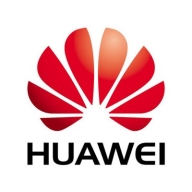

Cisco Ethernet Switches and Huawei Ethernet Switches compete in the Ethernet switch category, each with distinct advantages. Cisco holds the upper hand with stability and advanced features, while Huawei offers competitive pricing.
Features: Cisco Ethernet Switches offer superior features such as active power management, Smartports for easy configuration, and comprehensive security with MACSec encryption. StackPower technology and advanced routing capabilities also enhance Cisco’s offerings. Huawei Ethernet Switches provide robust basic functions, integration with major brands, and a competitive cost-to-features ratio, making them suitable for cost-conscious buyers.
Room for Improvement: Cisco Switches have higher initial costs and require experienced personnel for optimal configuration. Issues with interoperability, reliance on CLI, and vendor lock-in are potential drawbacks. Huawei could improve interoperability and multilingual support, with documentation and update speed also needing attention.
Ease of Deployment and Customer Service: Cisco switches can be deployed across various environments, including hybrid and private cloud setups, and are supported by excellent customer service. Huawei switches offer versatile deployment options but can fall behind Cisco in support quality, though they maintain competitive pricing.
Pricing and ROI: Cisco products involve higher initial investments and licensing requirements, but they are seen as reliable with a high ROI in large networks. Huawei offers a more cost-effective pricing model, providing a cheaper alternative to Cisco, potentially delivering quicker ROI in cost-sensitive projects.


We monitor all Ethernet Switches reviews to prevent fraudulent reviews and keep review quality high. We do not post reviews by company employees or direct competitors. We validate each review for authenticity via cross-reference with LinkedIn, and personal follow-up with the reviewer when necessary.